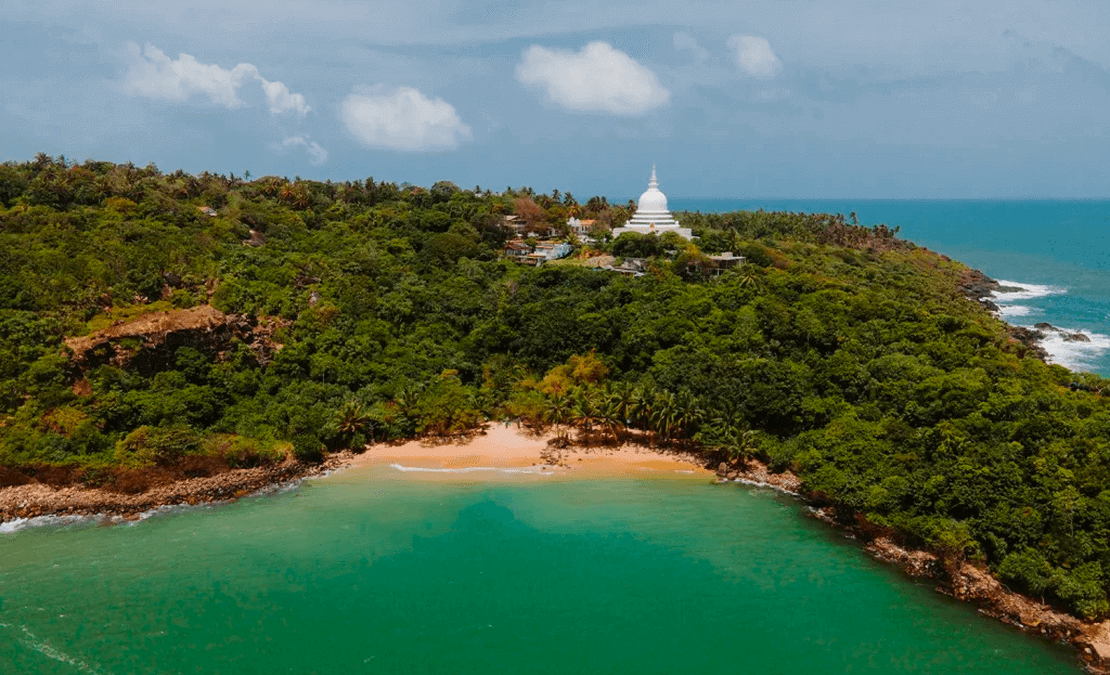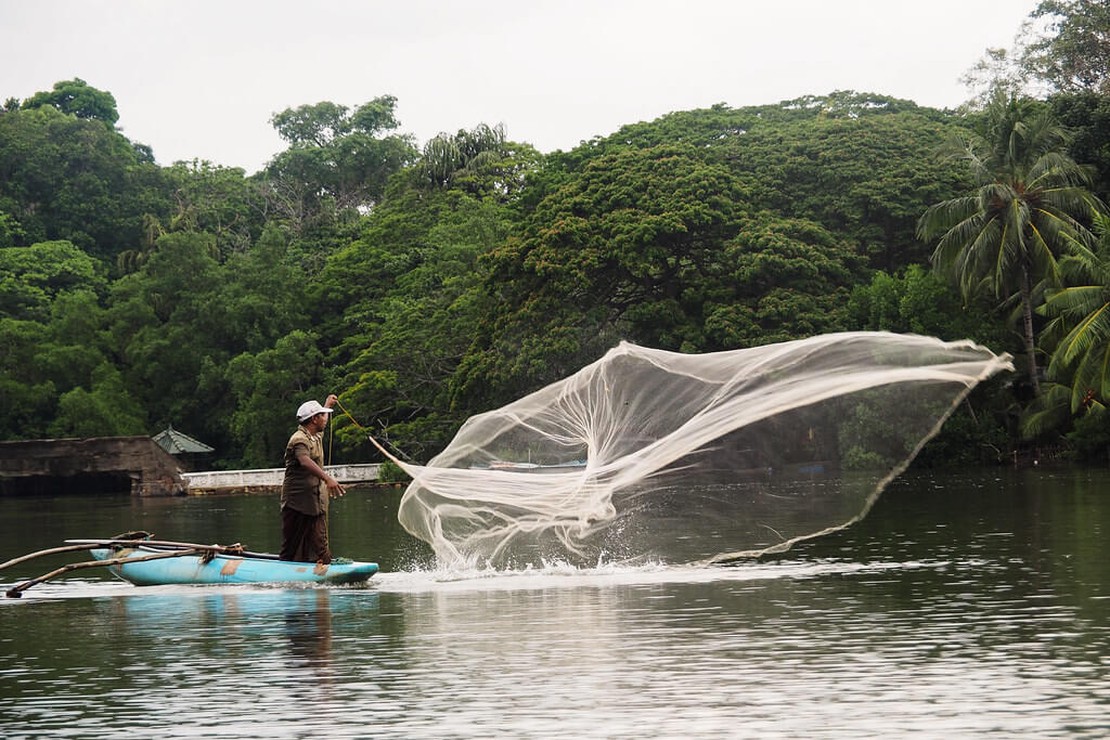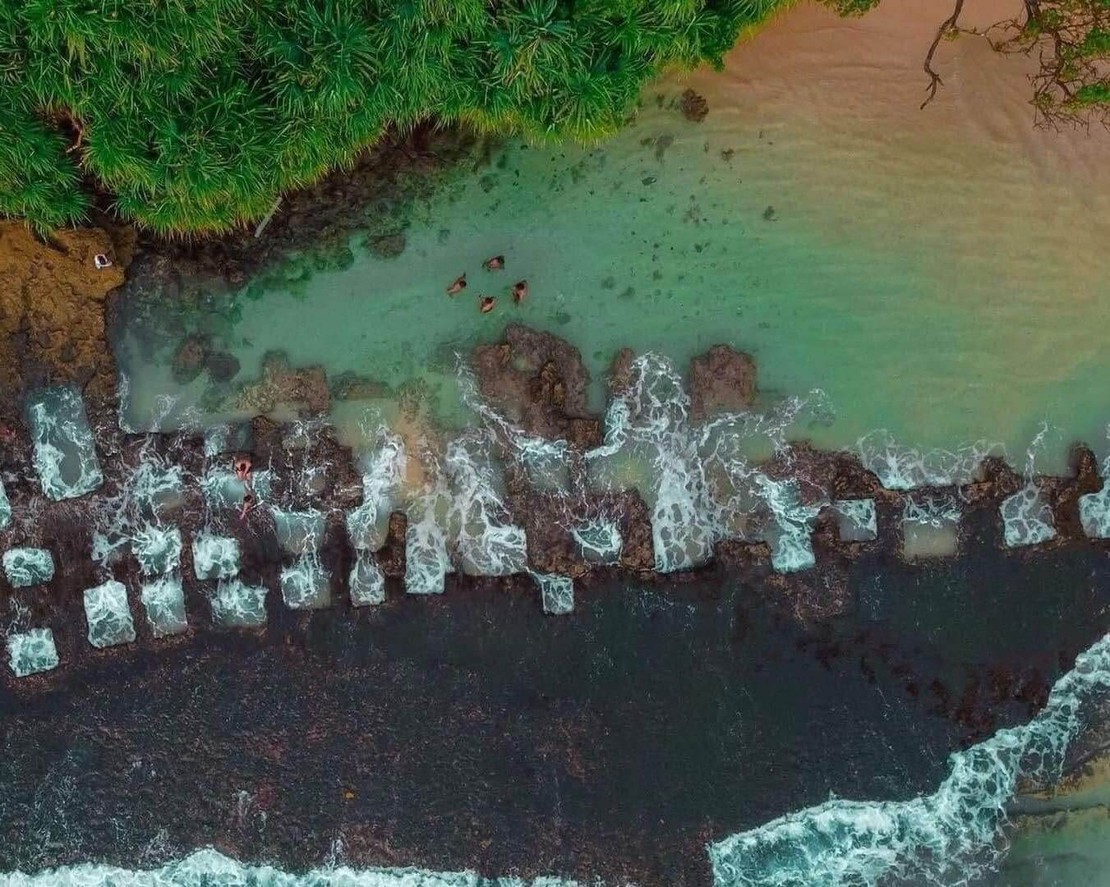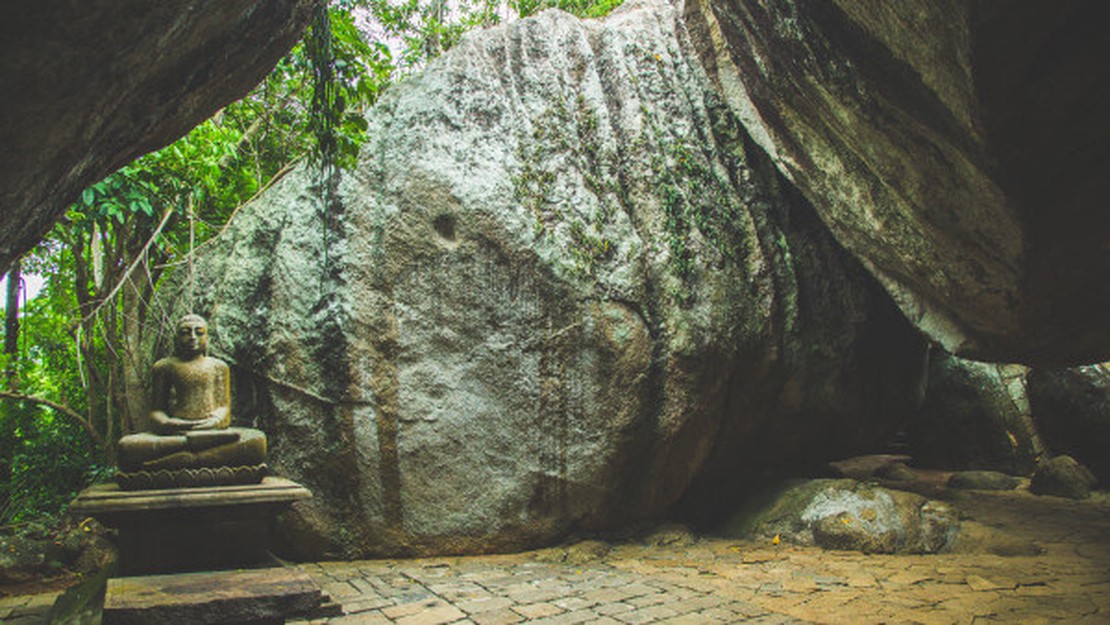
Rumassala – Mythical, Mysterious and Mesmerizing
- Admin
- History and culture , Coastal attractions , Outdoor activities
- September 20, 2023
If you are familiar with the religious and the mythological aspects of South Asia, especially India, you might be familiar with the epic of the ‘Ramayanaya’. In this epic there’s a point in the narrative where Hanuma grows bigger than a mountain and tears out a piece of the Himalayas where a whole bunch of rare medicinal plants are said to flourish, and walks into Sri Lanka. “Why did Hanuma tear out a piece of a mountain?” you might ask. Well, it’s because he forgot the exact plant that has the power to cure princess Seetha, so as any reasonable person would do, he picked up a side of a mountain and flew away with it. After acquiring the herb, it is said that Hanuma threw the piece of the mountain away and it landed right here in this southern region of the island which later became Galle and this is where this mythical story bleeds into reality in a surreal way; the piece of the Himalayan mountain range that Hanuma left, is said to be the Rumassala. What’s interesting about the whole story is how, bizarrely enough, a few certain types of medicinal herbs supposedly found only in the Himalayan region of India can also be found in Rumassala. Who knows, maybe there is some truth to the legendarium of the mythical history shared by Sri Lanka and India.
Other things to do:
While you are at Rumassala, one of the unmissable attractions is the highly advertised Japanese Peace Pagoda which overlooks the Indian Ocean from atop the Rumassala Mountain and gives you a panoramic view of the breathtaking scenery. And if you manage to get there at the moment of sunrise or sunset, you are in for a treat because the view is the epitome of a chef’s kiss. Plus, the whole aura of the place gives you a sense of calmness and relaxation that will make you not want to leave the heavenly spot. Plus, there is the Rumassala Dewalaya that is dedicated to Hanuma with a huge statue and all. So be sure to check that out while you are there. There is also the Jungle Beach which you can access from multiple points depending on which place you prefer. In addition, there are vendors on the path to the beach who will offer you refreshments to cool off while you enjoy the sun and the sea down at Jungle Beach.
Another place that offers a magnificent view is the small Buddhist temple at the Buona-Vista Elder’s Home that also houses a giant Buddha Statue. It is a fascinating place complete with murals that narrate stories from Buddhist history and also recent events like the Boxing Day Tsunami in 2004. Moreover, ‘Buona-Vista’ in Italian translates to ‘beautiful view/sight’ and the Sinhala name ‘Rumassala’ also when broken down to its etymology means ‘beautiful rock’. Either way, the names given to the place perfectly fits the description.
When to visit:
The temperature and the climate does not vary much throughout the year in the coastal region although there could be uneven amounts of rainfall from May to September. So, evidently, it is better if you chose to visit Rumassala during the drier, stable climatic conditions of the year which fall from October to April.
How do I get there?
While you are travelling towards Matara along the A2 road, you will pass Dewata, go over the bridge and just about then, to your right side there’s a restaurant named the Panda Restaurant. Just before the restaurant, there is a road that leads up hill. From then on you can pay attention to the numerous road signs that point to the Jungle Beach, the Buona Vista Elder’s Home and the Japanese Peace Pagoda. It’s up to you to choose your destination.
What to wear and carry:
It’s advisable that you carry more than one set of clothes if you are planning to visit both the Jungle beach and the Peace Pagoda. It’s because the Peace Pagoda (and the giant Buddha statue at the Elder’s Home), you will need to dress appropriately. And by appropriately, it means that you have to wear clothes that cover the entirety of your body and hats or caps are not allowed in the premises. In addition to that it will be easier for you if you could wear footwear that is easy to take off and wear because when you step into the pagoda premises you will have to take them off.
Accessibility:
The beach is not accessible to people on wheelchairs since the steps that lead you down to the beach are steep and winding and at some places there are no steps at all. So, obviously you will have to trek along rocky surfaces for a good chunk of the journey down. However, the way to the Elder’s Home and the Peace Pagoda is in much better shape. The Peace Pagoda is accessible through a small staircase and it is not that much of a huge deal for anyone of any age in any physical shape.
Where to wine and dine:
During the season (November-May), several roadside restaurants pop-up and they serve a variety of fusion food that are affordable. (Stir-fries in particular) . However, for a more sophisticated dining experience, there are a few restaurants attached to hotels.


